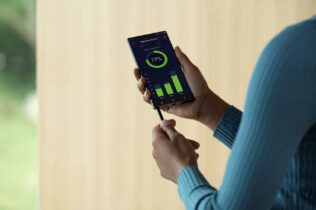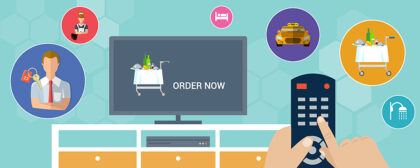When Albert Einstein famously advised, “Never memorize something that you can look up,” he was probably thinking about libraries of books and periodicals, and potentially hours of time. According to one story, the quote actually came when someone asked Einstein for his phone number, and he pulled out his little phone book to get it, to which the person exclaimed, “You don’t know your own phone number?”
Getting Things Done
Today we have much more information available in the palm of our hand than Einstein ever dreamed of. With a mobile device, we can access millions of servers filled with information. We can look up literally anything, meaning we never need to memorize anything according to one of history’s greatest geniuses.
Mobile Integration
As we move further and further away from desktop computers, and more and more users are preferring handheld mobile devices, we are witnessing the rise of a new kind of integration, one that IT channel partners can take significant advantage of: mobile integration.
Mobile devices already do far more than make phone calls. The name “smartphone” is hardly applicable to a device that can send and receive text and video beyond voice, that can search out information from the web and that serve as the control device for so much automation. Users can control their home lighting, thermostats, security and even their home entertainment from their mobile devices.
Mobile devices now also play a critical role as the second factor in multifactor authentication, helping to protect access to a wide variety of systems. They’re already a part of retail, banking, food service, shopping and many other systems.
Now, mobile devices are even being integrated with you — and almost serving as a second memory.
Accelerate Your Business Growth
Access professional development tools designed to give you a competitive edge. Download Now
Integrating You and Your Mobile Device
Consistent with Einstein’s observation, author David Allen explains in his book, “Getting Things Done: The Art of Stress-Free Productivity,” that his methods are based on “capturing all the things that might need to get done or have usefulness for you — now, later, someday, big, little or in-between — in a logical and trusted system outside your head and off your mind.”
The IT industry has always been about increasing productivity, and the applications you can integrate for your users into their mobile devices offer a great opportunity to provide real solutions.
If the first priority is to capture things, consider applications like S Note, Microsoft OneNote or Evernote, which can readily and easily capture voice, video and text entered either through a keyboard or handwriting stylus. These apps replicate the captured data to cloud-based counterparts that can later be accessed via the web or dedicated applications, and all provide extensive keyword search capabilities.
Going a step further, there are apps that help us manage our daily tasks and priorities. One example that has aligned itself significantly with Allen’s book is Todoist, which runs on your mobile device, your computer, the web and more, and provides an icon for the express purpose of adding a task. Integrating Google with Todoist enables you to tell Google on your mobile device to take a “Note to Self.” When you speak this command, Google asks “What’s the note?” which you can then dictate. What you say is transcribed and posted to your Todoist inbox immediately, where it can be integrated with the rest of your tasks.
Websites can be saved as tasks, as can emails. You can even send pages of notes from OneNote or Evernote to Todoist for inclusion. Everything you need to remember, but don’t have the bandwidth to retain, can all be saved into Todoist where it can be categorized, prioritized and organized into your various projects.
Similar apps include FollowUp.cc, Kyber, MeisterTask, Toodledo, Beeminder and Trello. All of these share another important factor in common: All are integrated into IFTTT (If This Then That), which solution providers may want to embrace as an integration platform. IFTTT.com includes hundreds of internet-accessible services and can be used to have a variety of actions triggered on one platform by user interactions on another. For example, the arrival of your mobile device at your office can trigger an email letting someone know that you’ve arrived. Additions to your calendar can trigger the creation of a new task in your task management system.
This level of task automation can be applied to every possible industry — from healthcare to government and more. For channel partners, it gives them the opportunity to offer software solutions to customers that will help them be more productive throughout their day, and also use these tools to their own benefit.
Getting Personal
We sometimes forget that “PC” stands for “personal computer.” The relationship users are having with their mobile devices is far more personal than any they ever had with a big machine. They use it to live, work and play. This creates a tremendous opportunity for solution providers to deepen the integration between user and device to produce far higher levels of productivity and satisfaction than ever before.
Already a Samsung partner? Log in to the Samsung Partner Portal to take advantage of cutting-edge programs and resources.






